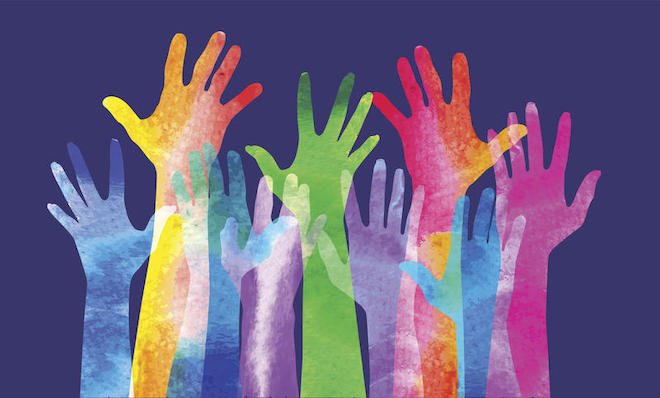
Overlapping silhouettes of Hands in a watercolour texture.
New Report Shows Incremental Gains in Law Firm Diversity
While 2020 saw historic numbers in female and minority lawyer representation at law firms, the actual gains are small.
A new NALP report finds that, overall, women and people of color at major U.S. law firms made incremental progress in representation in 2020 as compared with 2019.
LAW FIRMS STILL HEAVILY LACK DIVERSITY
2020 saw a historic increase of Black partners and Black associates, exceeding 2% and 5% respectively. While that’s the first-time numbers have reached that level, Black lawyers still make up a very small percentage among major firms.
The percentage of associates who are Black women hit 3.04%, marking the first time representation surpassed 2009’s 2.93% — a one-tenth of a percentage point increase over 11 years.
“Despite these increases,” NALP Executive Director James G. Leipold writes in the report, “less than four percent of all partners are women of color — a figure that remains abysmally low due to the significant underrepresentation of both women and people of color at the partnership level and a pattern that holds true across all firm sizes and most jurisdictions. Worse, Black women and Latinx women each continued to represent less than 1% of all partners in U.S. law firms.”
“THE PROFESSION HAS FAILED BLACK LAWYERS AND THE BLACK COMMUNITY”
Law firms across the world have a long way to go when it comes to diversity and inclusion.
A recent study between Thomson Reuters Transforming Women’s Leadership in Law (TWLL) and legal research platform Acritas looked at 40 major law firms in London and found that most were unaware of which diversity initiatives were effective and which weren’t.
“Lower-performing firms are likely to use mentoring. It’s not that we think mentoring is bad, but it’s not working as effectively as it could be,” Thomson Reuters managing director Lucinda Case tells Law.com. “Another question was: do men respond better to mentoring than women? Because it could quite easily be perceived by women as patronizing or pushing them further into silos.”
To truly have effective initiatives, the authors say, law firms need to first take a look at what’s holding them back—bias.
“The initiatives that proved to be effective were the ones that ensured women got fair opportunity to build up experience and relationships through mandating mixed-gender matter and pitch teams. And removing bias was of course essential to create the right culture for women to be treated equally,” Acritas chief executive Lisa Hart Shepherd tells Law.com.
That issue of bias has long been a similar issue here in the U.S., where Black women and Latinx women each represent less than 1% of all partners in law firms.
“The problems of racism and bias in American society are longstanding and run deep, dating back to our history of slavery, and the legal profession sits squarely in that history, but we are not bound by past practices and beliefs,” Leipold, of the NALP, writes. “Let this time embolden all of us to renew our efforts to address more directly and more forcefully systemic bias and prejudice in the legal profession, and in particular the many ways that the profession has failed Black lawyers and the Black community.”
Sources: NALP, Law.com, ABA Journal
